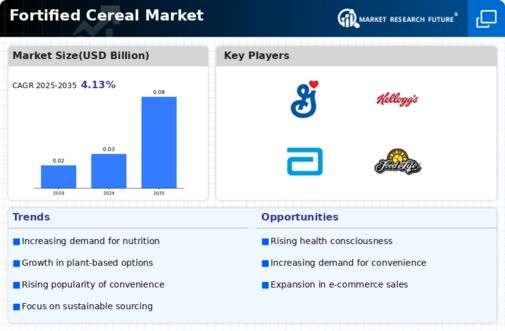Market Share
Fortified Cereal Market Share Analysis
In the competitive landscape of the Fortified Cereal Market, companies employ various strategies to secure market share and differentiate themselves in a crowded marketplace. One of the primary strategies used is product differentiation. Manufacturers of fortified cereals differentiate their offerings by incorporating various fortifications such as vitamins, minerals, fiber, and protein into their products. For example, some companies may specialize in producing fortified breakfast cereals with added vitamins and minerals to appeal to health-conscious consumers, while others may focus on fortified granola or muesli with added protein and fiber for those seeking specific nutritional benefits. By providing unique products tailored to different consumer needs and preferences, companies can effectively target various market segments and establish a strong presence in the industry.
Pricing strategy is another crucial aspect of market share positioning in the fortified cereal market. Manufacturers may position their products as premium, mid-range, or budget-friendly options based on factors such as the level of fortification, quality of ingredients, and brand reputation. Premium brands often emphasize the use of high-quality fortified ingredients and advanced production techniques, while budget brands may offer more affordable alternatives without compromising on nutritional content. By strategically pricing their products, companies can appeal to different customer segments and capture market share across various price points.
Distribution channels play a significant role in reaching customers and expanding market share in the fortified cereal market. Manufacturers must ensure their products are readily available through various channels such as supermarkets, health food stores, convenience stores, online retailers, and institutional buyers like schools or hospitals. By establishing a robust distribution network, companies can increase their visibility and accessibility to customers, thereby enhancing their market share.
Marketing and branding efforts are also crucial for market share positioning in the fortified cereal market. Companies invest in branding initiatives to differentiate their products and create awareness among consumers. This could involve developing strong brand identities, implementing targeted marketing campaigns, and engaging with customers through educational content and social media platforms. By building brand recognition and loyalty, companies can strengthen their market position and attract new customers.
Innovation serves as a key driver of market share growth in the fortified cereal market. Manufacturers continuously innovate by developing new fortification technologies, exploring novel ingredients, and introducing innovative product formats. For example, companies may invest in research and development to create fortified cereal bars or snacks targeted at specific consumer groups such as children or athletes. By staying at the forefront of innovation, companies can differentiate themselves from competitors and capture market share in emerging segments.
Partnerships and collaborations can also be effective strategies for increasing market share in the fortified cereal market. Manufacturers may partner with nutritionists, dietitians, health influencers, or fitness brands to promote the health benefits of fortified cereals. For instance, collaborating with nutritionists to develop customized cereal recipes or partnering with health influencers to create engaging content about the importance of fortification in breakfast can help increase brand visibility and drive sales.
Maintaining product quality and customer satisfaction is paramount for long-term success in the fortified cereal market. Manufacturers must adhere to stringent quality control standards and regulatory requirements to ensure product safety and efficacy. Additionally, providing excellent customer service and support can help build trust and loyalty among customers, leading to positive word-of-mouth recommendations and repeat business.







Leave a Comment